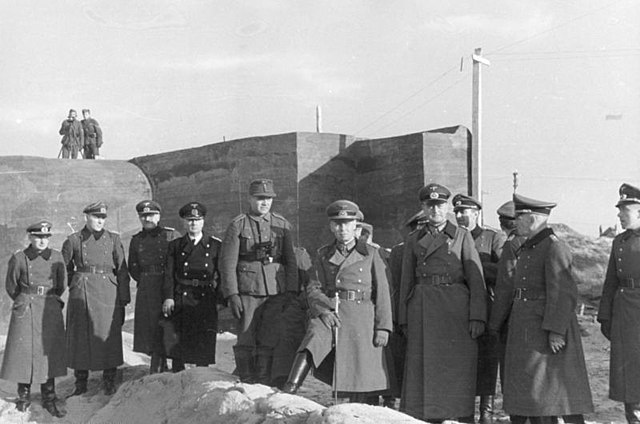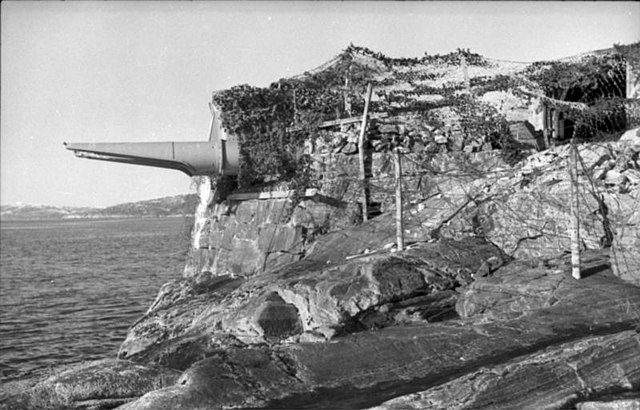The Atlantic Wall was an extensive system of coastal defences and fortifications built by Nazi Germany between 1942 and 1944 along the coast of continental Europe and Scandinavia as a defence against an anticipated Allied invasion of Nazi-occupied Europe from the United Kingdom, during World War II. The manning and operation of the Atlantic Wall was administratively overseen by the German Army, with some support from Luftwaffe ground forces. The Kriegsmarine maintained a separate coastal defence network, organised into a number of sea defence zones.
Construction of the Atlantic Wall fortifications in the 1940s
Field Marshal Erwin Rommel visiting the Atlantic Wall defences near the Belgian port of Ostend, part of the fortifications which today comprise the Atlantic Wall Open Air Museum at Raversijde
Camouflaged German torpedo battery in northern Norway
A British soldier poses next to the recently captured German 380 mm gun Todt Battery at Cap Gris Nez.
Operation Overlord was the codename for the Battle of Normandy, the Allied operation that launched the successful liberation of German-occupied Western Europe during World War II. The operation was launched on 6 June 1944 (D-Day) with the Normandy landings. A 1,200-plane airborne assault preceded an amphibious assault involving more than 5,000 vessels. Nearly 160,000 troops crossed the English Channel on 6 June, and more than two million Allied troops were in France by the end of August.
LSTs with barrage balloons deployed, unloading supplies on Omaha Beach for the breakout from Normandy
US Army M4 Sherman tanks loaded in a landing craft tank (LCT), ready for the invasion of France, c. late May or early June 1944
D-day assault routes into Normandy
Air plan for the Allied landing in Normandy








